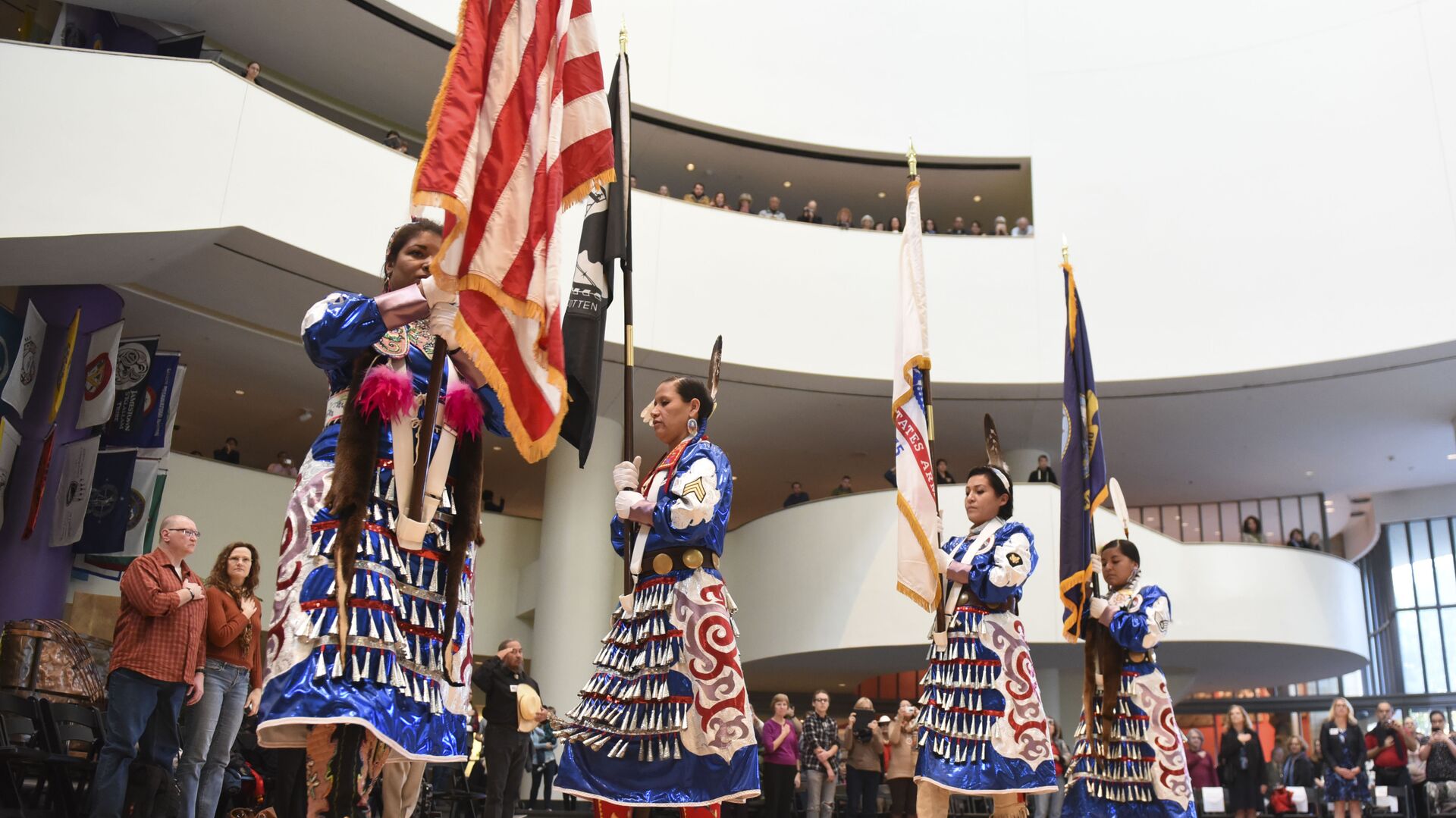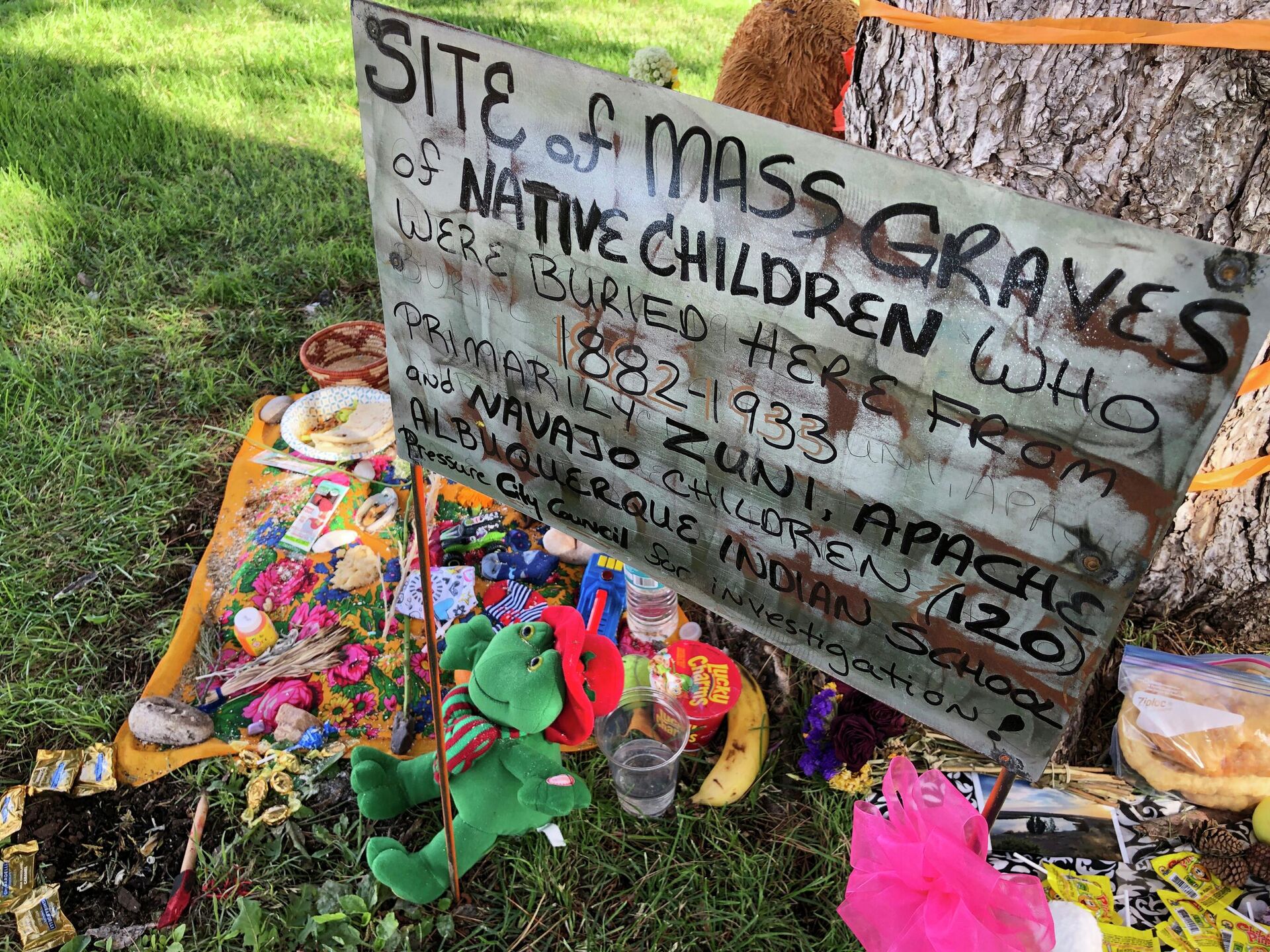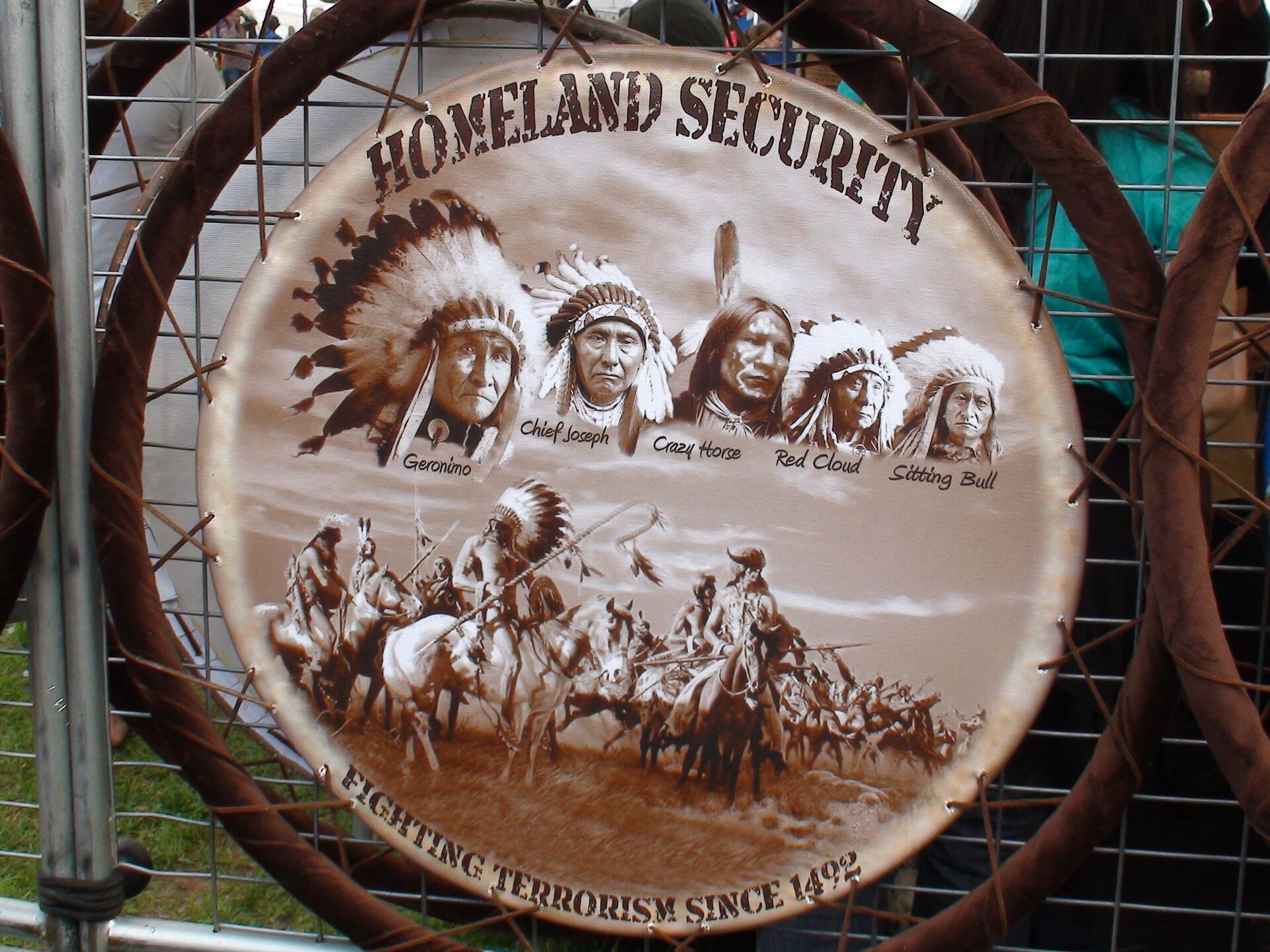https://sputnikglobe.com/20220809/indigenous-peoples-day-american-first-nations-continue-to-struggle-against-racism-poverty-1099398343.html
Indigenous Peoples’ Day: American First Nations Continue to Struggle Against Racism, Poverty
Indigenous Peoples’ Day: American First Nations Continue to Struggle Against Racism, Poverty
Sputnik International
Tuesday is the International Day of the World's Indigenous Peoples, a commemoration begun by the United Nations in 1994 to highlight the necessity of... 09.08.2022, Sputnik International
2022-08-09T12:00+0000
2022-08-09T12:00+0000
2022-08-09T12:28+0000
native americans
indigenous peoples' day
racism
us
colonialism
sputnik explains
https://cdn1.img.sputnikglobe.com/img/105841/74/1058417458_0:254:4997:3064_1920x0_80_0_0_7d12d0b84284a87237bcf34c07fa3c00.jpg
When the United Nations Declaration on the Rights of Indigenous Peoples (UNDRIP) was adopted in September 2007, four nations opposed it: Australia, Canada, New Zealand and the United States. All four have since reversed their votes, with the US being the last country in the world to ratify the declaration in 2010. However, Washington still maintains that its support is aspirational and not legally binding.Despite being the first to live on the lands that later became the United States, indigenous people are severely economically and politically repressed, facing high rates of poverty, unemployment, and discrimination, and suffering the health-related effects of that situation.Native women are two to three times more likely than women of any other race to be targets of violence, stalking, or sexual assault, with 80% of Native American women reporting having been targets, nearly always by non-Native perpetrators. While this phenomenon is as old as European contact, Native tribal leaders say a more recent driving force is that tribes have limited authority to detain and prosecute non-tribal citizens for crimes on tribal lands, meaning that federal prosecutors are the only ones who can bring charges - and they often don’t, meaning crimes go unpunished.It is still common for tribal lands, and historic tribal lands now held by the federal government, to be exploited for mineral wealth, including allowing petroleum companies to build oil wells or pipelines on them, and toxic mining processes. Decades of uranium mining in the Navajo Nation has caused extensive irradiation of the countryside, creating a disease known as Navajo Neuropathy. One spring in northeastern Arizona was reported to have uranium levels "at least five times greater than safe drinking water standards" by a study published in the journal Environmental Science & Technology in 2015. The contamination caused the early deaths of many children who drank from the spring or whose mothers drank the water while pregnant.In addition to the people, their culture is also slowly dying out. Of the 115 indigenous languages spoken today in the United States, just two are considered in a healthy state; another 34 are in danger and 79 are expected to be extinct within a generation without serious intervention, so few are the elders who still speak them.500 Years of Colonization and DeclineBefore European contact in 1492, there were an estimated 60 million people living in what would later become the United States. These people built complex societies and trading networks that stretched across the continent, and their complex mythology carried knowledge of how to tend the land and keep it healthy for future generations.Contact was disastrous, though, and those Native people not killed by superior European weapons quickly died from the many epidemic diseases brought by Europeans, including smallpox, syphilis, and malaria, cutting the area’s population by 90% within a century.However, over the following century, waves of European settlement swept the land, driving the indigenous people further west, including in brutal deportations such as the Trail of Tears, which removed five powerful nations from the American South and sent them to Oklahoma. Later, these and other nations were herded into specialized territories called reservations, sometimes on just a small fraction of their former territory and on other occasions, in a completely different location, and often lacking the resources to support themselves, especially following a concentrated US Army effort to eradicate the American bison, which was essential to the Great Plains tribes. This, combined with the regular seizures of indigenous children and their forcible assimilation to European languages, dress, and customs, rapidly decreased the population.Before 1924, Native Americans were considered “wards of the state” and denied basic rights, including the right to travel off reservation lands without a special permit. Citizenship, a necessary designation for enjoying certain protections under the US Constitution, as well as the right to vote, was only extended to all Native Americans in 1924, although many jurisdictions continued to deny them voting rights until the Civil Rights Act of 1968.
Sputnik International
feedback@sputniknews.com
+74956456601
MIA „Rossiya Segodnya“
2022
Sputnik International
feedback@sputniknews.com
+74956456601
MIA „Rossiya Segodnya“
News
en_EN
Sputnik International
feedback@sputniknews.com
+74956456601
MIA „Rossiya Segodnya“
Sputnik International
feedback@sputniknews.com
+74956456601
MIA „Rossiya Segodnya“
native americans, indigenous peoples' day, racism, us, colonialism, sputnik explains
native americans, indigenous peoples' day, racism, us, colonialism, sputnik explains
Indigenous Peoples’ Day: American First Nations Continue to Struggle Against Racism, Poverty
12:00 GMT 09.08.2022 (Updated: 12:28 GMT 09.08.2022) Tuesday is the International Day of the World's Indigenous Peoples, a commemoration begun by the United Nations in 1994 to highlight the necessity of protecting the rights of the world’s indigenous populations and to promote their cultures.
When the United Nations Declaration on the Rights of Indigenous Peoples (UNDRIP) was adopted in September 2007,
four nations opposed it: Australia, Canada, New Zealand and the United States. All four have since reversed their votes, with the
US being the last country in the world to ratify the declaration in 2010. However, Washington still maintains that its support is aspirational and not legally binding.
In the United States today, there are 574 federally recognized tribes, as well as numerous others that enjoy recognition at state level or which have no official status. Roughly 9.6 million people, or 2.9% of the US population, claim Native American descent on either one or both sides of their family. The vast majority of them do not live on specialized reservation lands set aside for tribes.
Despite being the first to live on the lands that later became the United States, indigenous people are severely economically and politically repressed, facing high rates of poverty,
unemployment, and discrimination, and suffering the health-related effects of that situation.
According to US government statistics, one-quarter of Native Americans live in poverty - the highest poverty rate of any racial or ethnic group. That rate is even higher on reservations, which often have few well-paying jobs or quality educational facilities. In addition, Native Americans on average are paid just 60% of the wages of their white counterparts.
Native women are
two to three times more likely than women of any other race to be targets of violence, stalking, or sexual assault, with 80% of Native American women reporting having been targets, nearly always by non-Native perpetrators. While this phenomenon is as old as European contact, Native tribal leaders say a more recent driving force is that tribes have limited authority to detain and prosecute non-tribal citizens for crimes on tribal lands, meaning that federal prosecutors are the only ones who can bring charges - and they often don’t, meaning crimes go unpunished.
It is still common for tribal lands, and historic tribal lands now held by the federal government, to be
exploited for mineral wealth, including allowing petroleum companies to build oil wells or pipelines on them, and toxic mining processes. Decades of uranium mining in the Navajo Nation has caused extensive irradiation of the countryside, creating a disease known as
Navajo Neuropathy. One spring in northeastern Arizona was reported to have uranium levels "at least five times greater than safe drinking water standards" by a
study published in the journal Environmental Science & Technology in 2015. The contamination caused the early deaths of many children who drank from the spring or whose mothers drank the water while pregnant.
Their lands are also used for weapons testing, the most notorious examples being the more-than-100 nuclear bombs detonated in Nevada and New Mexico, which irradiated the land and water, poisoning those who were exposed and denying the land’s use to others for decades - and possibly even centuries - after.
In addition to the people, their culture is also slowly dying out. Of the
115 indigenous languages spoken today in the United States, just two are considered in a healthy state; another 34 are in danger and 79 are expected to be extinct within a generation without serious intervention, so few are the elders who still speak them.
500 Years of Colonization and Decline
Before European contact in 1492, there were an estimated 60 million people living in what would later become the United States. These people built complex societies and trading networks that stretched across the continent, and their complex mythology carried knowledge of how to tend the land and keep it healthy for future generations.
Contact was disastrous, though, and those Native people not killed by superior European weapons quickly died from the many epidemic diseases brought by Europeans, including smallpox, syphilis, and malaria, cutting the area’s population by 90% within a century.
When 13 of the British colonies in North America declared independence in 1776 and formed the United States, European settlement was restricted to a strip of land along the Atlantic coast no greater than 300 miles wide, and patchy settlements in what was then a northern part of New Spain. Although many Native tribes had been driven off those coastal lands, the rest of the continent fell under their sovereignty and they were recognized as independent nations that concluded treaties with European states.
However, over the following century, waves of European settlement swept the land, driving the indigenous people further west, including in brutal deportations such as the Trail of Tears, which removed five powerful nations from the American South and sent them to Oklahoma. Later, these and other nations were herded into specialized territories called reservations, sometimes on just a small fraction of their former territory and on other occasions, in a completely different location, and often lacking the resources to support themselves, especially following a concentrated US Army effort to
eradicate the American bison, which was essential to the Great Plains tribes. This, combined with the regular seizures of indigenous children and their
forcible assimilation to European languages, dress, and customs, rapidly decreased the population.
Indigenous people heroically resisted, forming coalitions and mounting guerrilla campaigns against the US Army and the many settler caravans crossing their territory. However, in the end there were simply far too many settlers and they could not compete with technology like the rifle, the railway, and the barbed wire fence.
Before 1924, Native Americans were considered “wards of the state” and denied basic rights, including the right to travel off reservation lands without a special permit. Citizenship, a necessary designation for enjoying certain protections under the US Constitution, as well as the right to vote, was only extended to all Native Americans in 1924, although many jurisdictions continued to deny them voting rights until the Civil Rights Act of 1968.



